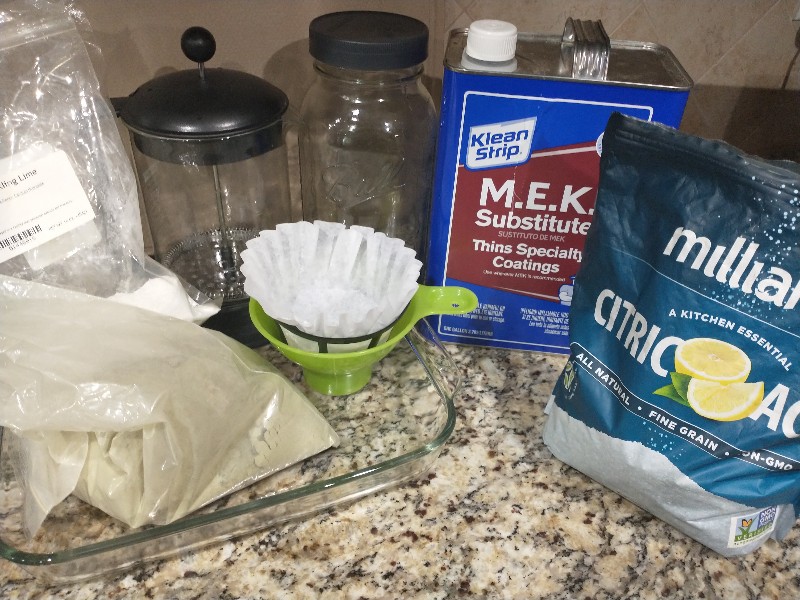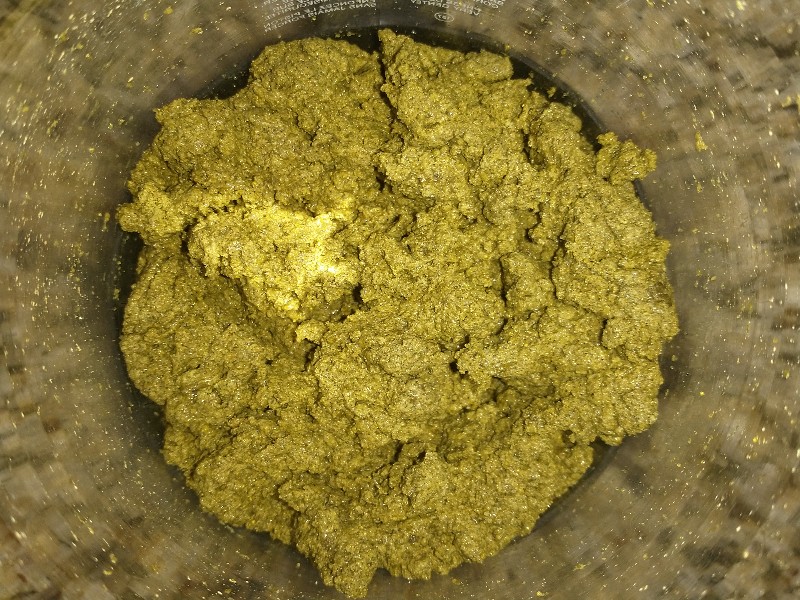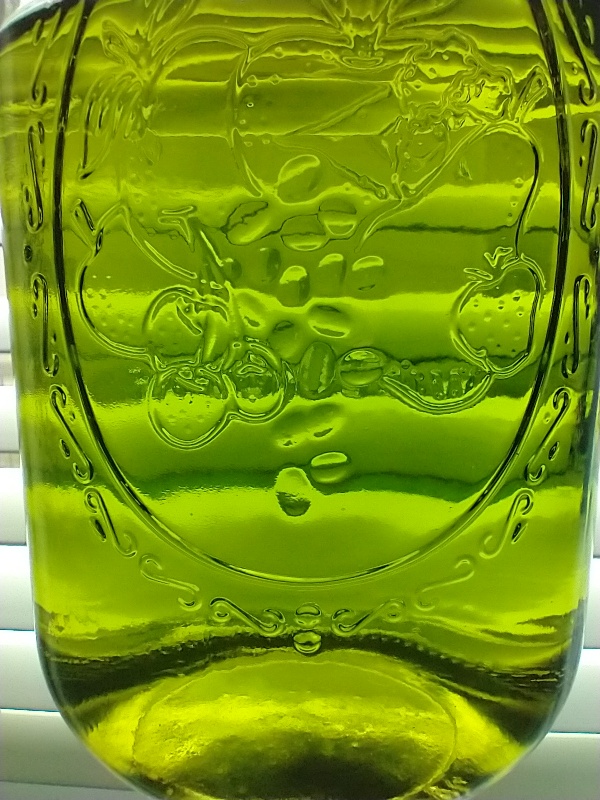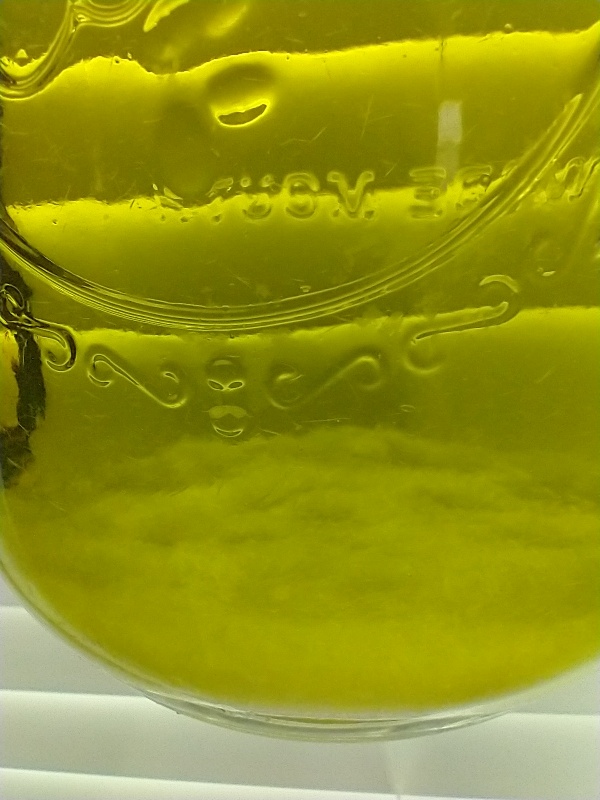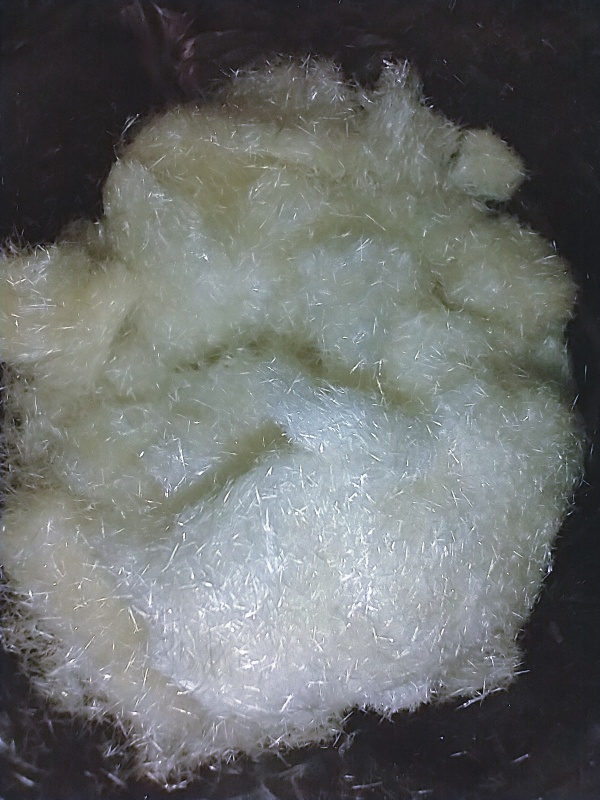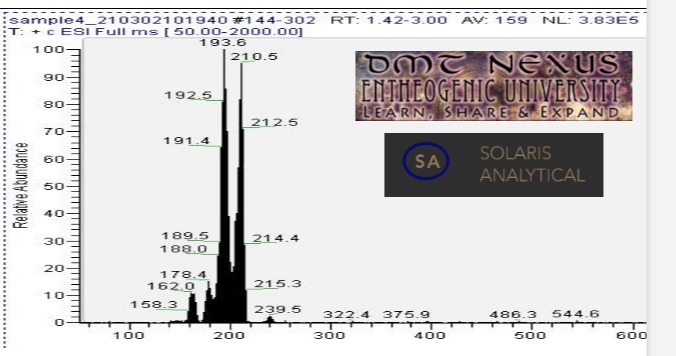Difference between revisions of "CIELO"
(→Disclaimer) |
(→Disclaimer) |
||
| Line 107: | Line 107: | ||
== Disclaimer == | == Disclaimer == | ||
| − | It is possible that some of the assumptions and conclusions in these lab notes are incorrect or incomplete. The process was tested in several ways, but the search was not exhaustive | + | It is possible that some of the assumptions and conclusions in these lab notes are incorrect or incomplete. The process was tested in several ways, but the search was not exhaustive. There could be ways to improve this process. |
= References = | = References = | ||
<references/> | <references/> | ||
Revision as of 22:50, 4 June 2021
Contents
Introduction
CIELO stands for Crystals In Ethyl-acetate Leisurely Over-the-counter.
In this technique (TEK), aqueous alkaline cactus paste is extracted with chilled ethyl acetate (sometimes sold as "MEK Substitute" in hardware stores). Excess citric acid is added to the extract to precipitate mescaline citrate crystals.
This TEK was developed in a loving collaboration at the DMT nexus. Deep thanks and gratitude go to everyone who contributed: someblackguy, Benzyme, shroombee, Metta-Morpheus, Downwardsfromzero, Kash, grollum, Mindlusion, Doubledog, Loveall, and others.
Safety
Review ethyl acetate's safety information[1]. Verify MSDS, plastic compatibility, and clean evaporation.
Following this advice does not guarantee safety. It is up to each adult individual to make their own decision.
Materials
- 300g water
- 25g lime
- 100g dry cactus powder (outer skin or whole cactus)
- ~1200g ethyl acetate
- Coffee filters
- 5g of citric acid if using outer skin (20g if using whole cactus)
- Non-consumables: Quart jar or french press (preferred), Large jar (~64 oz), funnel, coffee filter support, shallow baking dish with ethyl acetate resistant lid.
Process
Make Alkaline Paste
Mix water and lime in a quart jar or preferably a french press. Incorporate cactus while stirring and continue stirring for at least 10 minutes to a smooth paste. Allow paste to react for 24 hours and mix again for a few minutes.
Pull Alkaline Paste
Add ~ 300g of freezer chilled ethyl acetate (~0 F) to the paste, mix for 60 seconds, and decant/filter to a large jar (~64 oz). If using a french press squeeze very gently or not at all to avoid pulling water. Immediately pull 5 more times with ~150g of ethyl acetate stirring for 60 seconds each time.
Inspect extract for droplets or particles. If any are present, decant/filter to remove them.
Final extract should be clear with no droplets or particles (see Fig. 3).
Crystalize Extract
Pour room temperature extract into shallow baking dish and add 5g of citric acid (20g if using whole cactus). Cover with ethyl acetate resistant lid (or alternatively add a protective layer of aluminum foil below the lid and baking dish).
Citric acid will diffuse into solution forming clouds which over time crash as mescaline citrate crystals (Fig. 4). Allow enough time to complete crystallization (~24h).
Collect Crystals
Decant and rinse baking dish with a small amount of fresh ethyl. Repeat until green color is removed (2-3 times). Allow crystals to dry and collect them. This is the final product (Fig. 5).
Mass spectrometry (MS) results from solaris analytical[2] indicate the product is very clean mescaline (Fig. 6). Yield is highly dependent on cactus material, usually between 0.2% to 2% [3].
Appendix: Development Notes
Paste
No improvements were seen with microwaving, partially drying with heat or a drying agent, adding NaCl to change ethe ionic strength, or extending the reaction time beyond 24h. Completely drying the paste made the process not work.
Pull
It also possible to obtain good results with 3 minute room temperature pulls (30s of stirring and 150s of rest), but the results may not be as consistent compared to chilled ethyl acetate (60s of stirring). This is thought to be because of increased plant contaminants in the warmer pull at room temperature.
Long room temperature pulls made the paste congeal and resulted in lower yield. Heating during the pull did not improve yields. Generally, longer times or higher temperatures make the crystalization more difficult without yield improvements. Also, a persistent tan color can contaminate the product.
Extract
Chemically drying the extract with a drying agent such as anhydrous MgSO4 before salting had no yield benefit. In one example, drying the extract with CaCl2 resulted in a more difficult crystalization and a 40% yield loss. In general, any water content in ethyl acetate directly from the pulls is already in a good range experimentally.
Droplets or debris not decanted/filtered before adding citric acid will result in crystalization issues. It is very important to verify the extract is clean as mentioned in the main TEK.
Crystalization
During crystallization, every 10mg of citric acid (H3Cit) reacts with free base mescaline (Mes) to form to 43mg of mescaline citrate (or slightly more if a hydrate is precipitating):
The TEK calls for a lot more citric acid than would be needed for titration. The reason is that excess citric acid induces crystalization to overcome any water or plant material that would otherwise keep mescaline citrate in solution. This is a simple but very important lab observation, compatible with Le Chatelier's principle. There is a lot room for excess citric acid in ethyl acetate since its solubility is 50mg/g (and water in the solvent from the pulls may increase this solubility further). The TEK recommends 5mg/g for outer skin cactus powder and 20mg/g for whole cactus powder based on early experiments[4].
Other dry organic acids could work. Fumaric, Malic, Tartaric, Ascorbic, Succinic, etc can be tested in future investigations.
Disclaimer
It is possible that some of the assumptions and conclusions in these lab notes are incorrect or incomplete. The process was tested in several ways, but the search was not exhaustive. There could be ways to improve this process.
